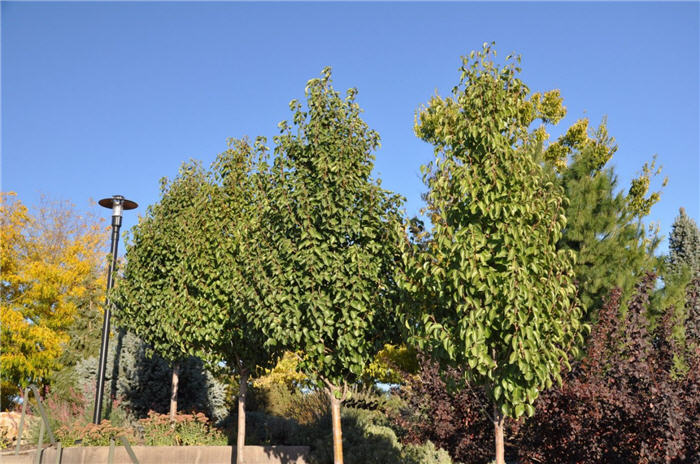| Botanical Name: Pyrus calleryana 'Chanticleer' | |
| Common Name: Chanticleer Flowering Pear |

-
Anatomy
-
Culture
-
Design
Plant Type
Tree
Height Range
25-40'
Flower Color
White
Flower Season
Spring
Leaf Color
Green
Bark Color
Brown, Grey
Fruit Color
Brown
Fruit Season
Summer, Fall
Sun
Full
Water
Medium
Growth Rate
Moderate
Soil Type
Sandy, Clay, Loam, Rocky, Unparticular
Soil Condition
Average, Rich, Well-drained, Dry
Soil pH
Acid, Neutral, Basic
Adverse Factors
Attracts Bees
Design Styles
English Cottage, Formal, Japanese, Mediterranean
Accenting Features
Fall Color, Fragrance, Showy Flowers, Silhouette
Seasonal Interest
Spring, Summer, Fall
Location Uses
Background, Entry, Shrub Border, Foundation, Patio, Parking Lot, Walls / Fences, Walkways
Special Uses
Screen, Mass Planting, Shade Tree, Fire Resistant, Small Spaces
Attracts Wildlife
Birds
Information by: Stephanie Duer
Photographer: HMH Architects
Photographer: HMH Architects
-
Description
-
Notes
‘Chanticleer’ is considered to be one of the best of the flowering pear cultivars currently available in commerce. It is a tight, narrow, pyramidal, thornless ornamental pear tree that typically grows 25 to 35 feet tall and 15 feet wide. Some specimens appear almost columnar in habit. Five-petaled, creamy white flowers in dense clusters appear in profusion in early spring. Oval, glossy dark green leaves have slightly toothed margins, and fairly dance in the breeze due to long petioles. Leaves turn attractive reddish-purple in fall. Useful in small spaces, patios, formal plantings, and as a living fence.
Grow in well drained soil in full sun. Adaptive to many soil types, including drier soils. Watering can be reduced after establishment. Prune in winter to early spring. It is noted for its resistance to fireblight, particularly in the northern parts of its growing range. It is susceptible to limb breakage or splitting from strong wind, snow or ice, but is much stronger than some other cultivars such as P. calleryana ‘Bradford’. Synonymous with and also known as ‘Cleveland Select’, ‘Select’, ‘Stone Hill,’ or ‘Glen’s Form.'